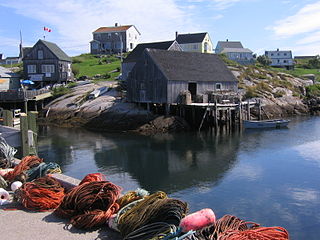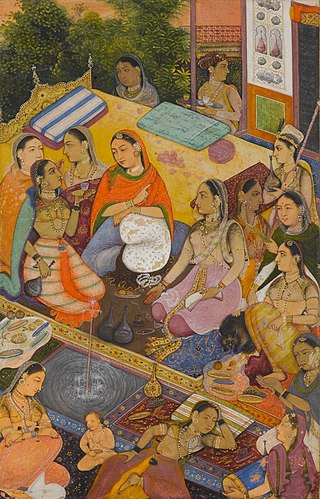Golden Age of Nova Scotia?
The work of the new social historians can be been in their study of social structure and its change over time. Several scholars have explored the so-called "golden age" of the Maritimes in the years just before Confederation. In Nova Scotia, the population grew steadily from 277,000 in 1851 to 388,000 in 1871, mostly from natural increase since immigration was slight. The era has been called a golden age, but that was a myth created in the 1930s to lure tourists to a romantic era of tall ships and antiques. [7] Recent historians using census data have shown that is a fallacy. In 1851-1871 there was an overall increase in per capita wealth holding. However most of the gains went to the urban elite class, especially businessmen and financiers living in Halifax. The wealth held by the top 10% rose considerably over the two decades, but there was little improvement in the wealth levels in rural areas, which comprised the great majority of the population. [8] Likewise Gwyn reports that gentlemen, merchants, bankers, colliery owners, shipowners, shipbuilders, and master mariners flourished. However the great majority of families were headed by farmers, fishermen, craftsmen and laborers. Most of them-and many widows as well—lived in poverty. Out migration became an increasingly necessary option. [9] [10] Thus the era was indeed a golden age but only for a small but powerful and highly visible elite.

The Maritimes, also called the Maritime provinces, is a region of Eastern Canada consisting of three provinces: New Brunswick, Nova Scotia, and Prince Edward Island. The Maritimes had a population of 1,899,324 in 2021, which makes up 5.1% of Canada's population. Together with Canada's easternmost province, Newfoundland and Labrador, the Maritime provinces make up the region of Atlantic Canada.

United Empire Loyalists is an honorific title which was first given by the 1st Lord Dorchester, the Governor of Quebec, and Governor General of the Canadas, to American Loyalists who resettled in British North America during or after the American Revolution. At the time, the demonym Canadian or Canadien was used to refer to the indigenous First Nations groups and the descendants of New France settlers inhabiting the Province of Quebec.
Social history, often called the new social history, is a field of history that looks at the lived experience of the past. In its "golden age" it was a major growth field in the 1960s and 1970s among scholars, and still is well represented in history departments in Britain, Canada, France, Germany, and the United States. In the two decades from 1975 to 1995, the proportion of professors of history in American universities identifying with social history rose from 31% to 41%, while the proportion of political historians fell from 40% to 30%. In the history departments of British and Irish universities in 2014, of the 3410 faculty members reporting, 878 (26%) identified themselves with social history while political history came next with 841 (25%).
Labor history or labour history is a sub-discipline of social history which specialises on the history of the working classes and the labor movement. Labor historians may concern themselves with issues of gender, race, ethnicity, and other factors besides class but chiefly focus on urban or industrial societies which distinguishes it from rural history.

The history of Ontario covers the period from the arrival of Paleo-Indians thousands of years ago to the present day. The lands that make up present-day Ontario, the most populous province of Canada as of the early 21st century have been inhabited for millennia by groups of Aboriginal people, with French and British exploration and colonization commencing in the 17th century. Before the arrival of Europeans, the region was inhabited both by Algonquian and Iroquoian tribes.

This is a bibliography of major works on the History of Canada.

The history of Nova Scotia covers a period from thousands of years ago to the present day. Prior to European colonization, the lands encompassing present-day Nova Scotia were inhabited by the Mi'kmaq people. During the first 150 years of European settlement, the region was claimed by France and a colony formed, primarily made up of Catholic Acadians and Mi'kmaq. This time period involved six wars in which the Mi'kmaq along with the French and some Acadians resisted the British invasion of the region: the French and First Nation Wars, Father Rale's War and Father Le Loutre's War. During Father Le Loutre's War, the capital was moved from Annapolis Royal, Nova Scotia, to the newly established Halifax, Nova Scotia (1749). The warfare ended with the Burying the Hatchet ceremony (1761). After the colonial wars, New England Planters and Foreign Protestants immigrated to Nova Scotia. After the American Revolution, Loyalists immigrated to the colony. During the nineteenth century, Nova Scotia became self-governing in 1848 and joined the Canadian Confederation in 1867.
Lars Osberg has been a member of the Economics Department at Dalhousie University since 1977. He also worked for a brief period at the University of Western Ontario. He is well known internationally for his contributions in the field of economics. His major research interests are the measurement and determinants of inequality, social exclusion and poverty, measurement of economic well-being, leisure co-ordination and economic well-being, time use and economic development, economic insecurity.
This is a bibliography of major works on Nova Scotia.
The following is a bibliography of Saskatchewan history.

Women's history is the study of the role that women have played in history and the methods required to do so. It includes the study of the history of the growth of woman's rights throughout recorded history, personal achievements over a period of time, the examination of individual and groups of women of historical significance, and the effect that historical events have had on women. Inherent in the study of women's history is the belief that more traditional recordings of history have minimized or ignored the contributions of women to different fields and the effect that historical events had on women as a whole; in this respect, women's history is often a form of historical revisionism, seeking to challenge or expand the traditional historical consensus.

During the American Revolution, those who continued to support King George III of Great Britain came to be known as Loyalists. Loyalists are to be contrasted with Patriots, who supported the Revolution. Historians have estimated that during the American Revolution, between 15 and 20 percent of the white population of the colonies, or about 500,000 people, were Loyalists. As the war concluded with Great Britain defeated by the Americans and the French, the most active Loyalists were no longer welcome in the United States, and sought to move elsewhere in the British Empire. The large majority of the Loyalists remained in the United States, however, and enjoyed full citizenship there.

The history of childhood has been a topic of interest in social history since the highly influential book Centuries of Childhood, published by French historian Philippe Ariès in 1960. He argued "childhood" as a concept was created by modern society. Ariès studied paintings, gravestones, furniture, and school records. He found before the 17th-century, children were represented as mini-adults.
This is a bibliography of selected publications on the history of Australia.

This is a bibliography of works on the Provinces and territories of Canada.
This is a selective bibliography of conservatism in the United States covering the key political, intellectual and organizational themes that are dealt with in Conservatism in the United States. Google Scholar produces a listing of 93,000 scholarly books and articles on "American Conservatism" published since 2000. The titles below are found in the recommended further reading sections of the books and articles cited under "Surveys" and "Historiography." The "Historiography" and "Critical views" section mostly comprise items critical or hostile of American conservatism.
The home front during World War I covers the domestic, economic, social and political histories of countries involved in that conflict. It covers the mobilization of armed forces and war supplies, lives of others, but does not include the military history. For nonmilitary interactions among the major players see Diplomatic history of World War I.

The History of Canadian women is the study of the historical experiences of women living in Canada and the laws and legislation affecting Canadian women. In colonial period of Canadian history, Indigenous women's roles were often challenged by Christian missionaries, and their marriages to European fur traders often brought their communities into greater contact with the outside world. Throughout the colonial period, European women were encouraged to immigrate to Canadian colonies and expand the white population. After Confederation in 1867, women's experiences were shaped by federal laws and by legislation passed in Canada's provincial legislatures.
Pearleen Oliver (1917–2008), sometimes Pearleen Borden Oliver, was a Black Canadian church leader, an anti-Black racism activist, writer, historian and educator.







